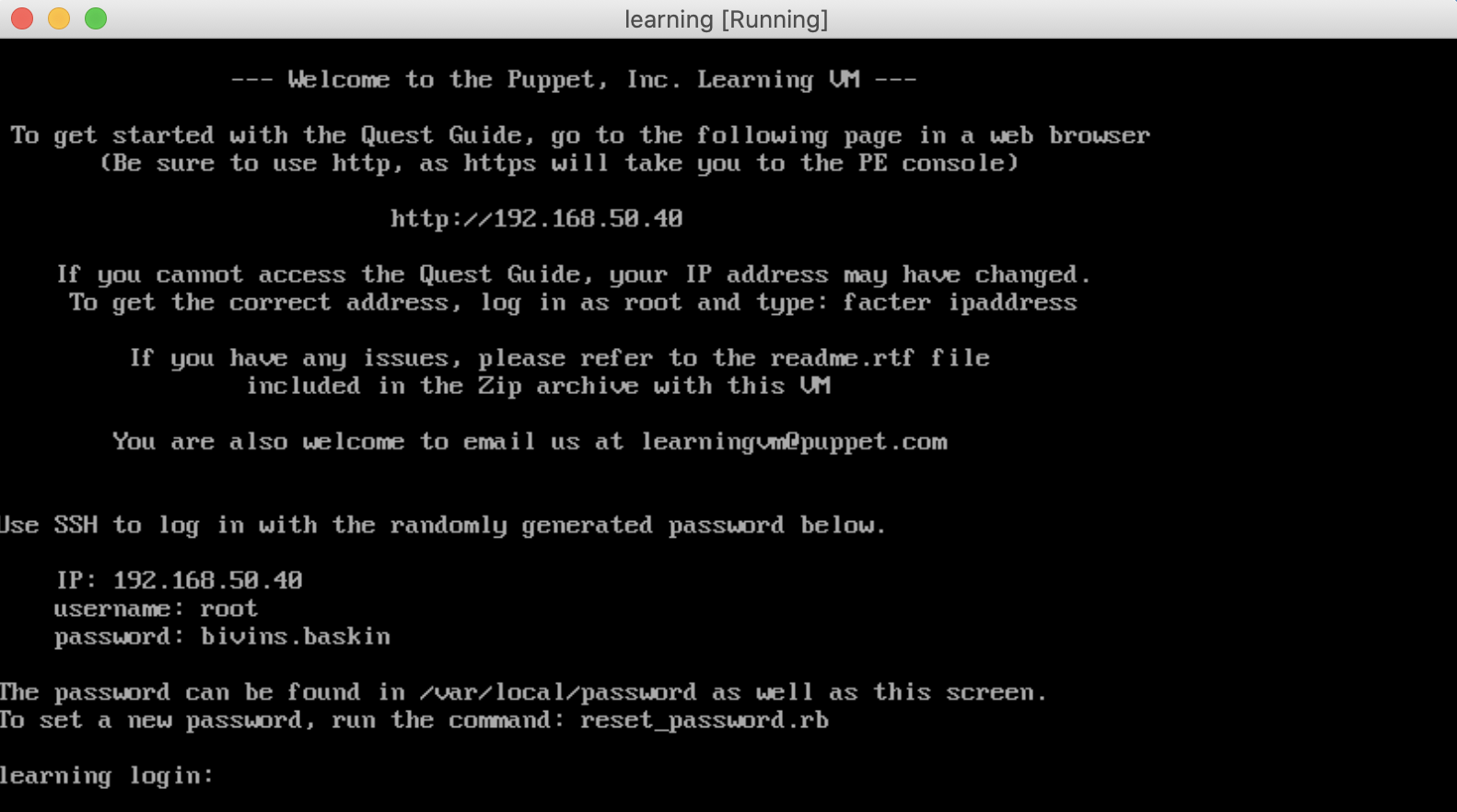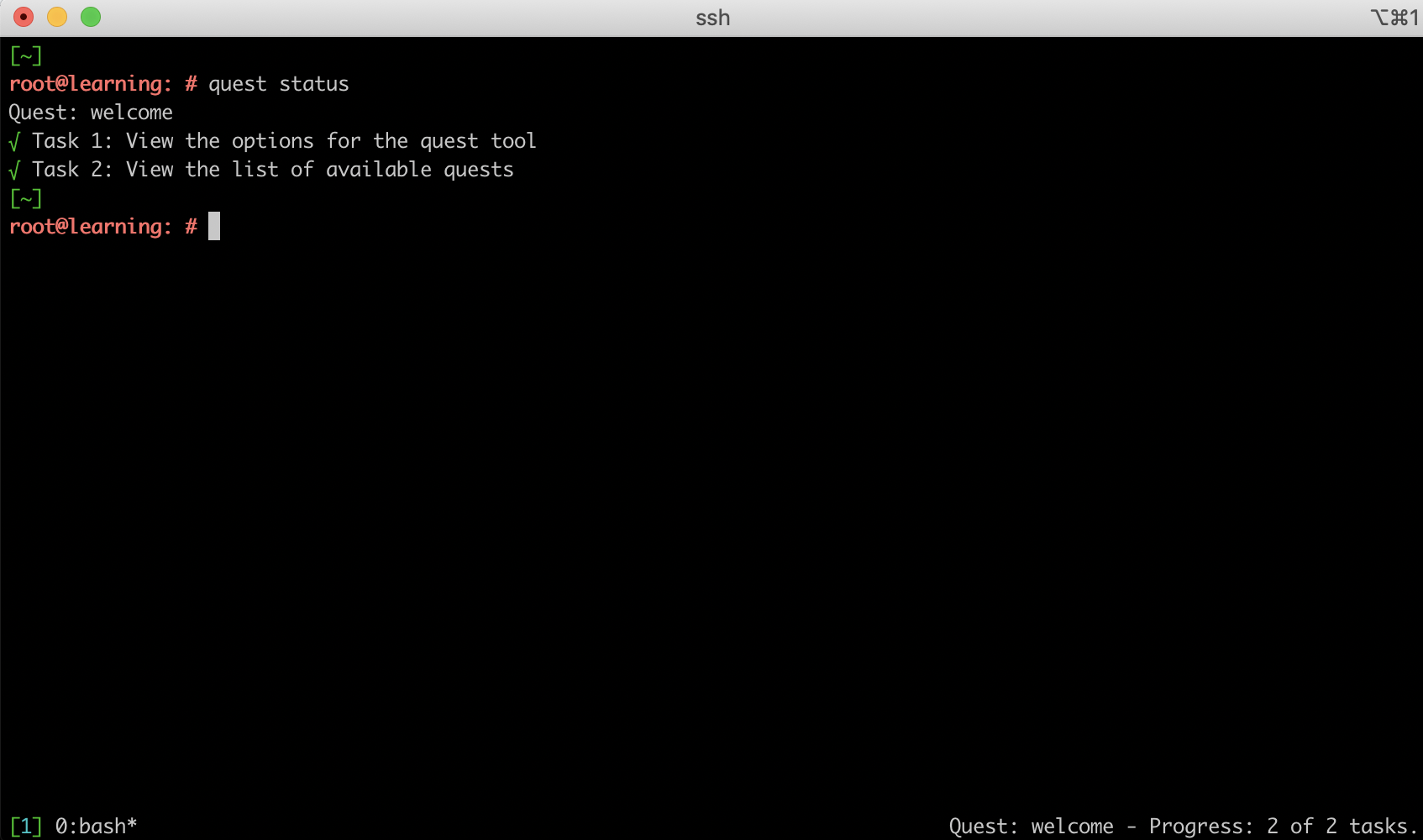This is instructions on how you can connect to your Puppet Learning Virtual Machine with SSH.
If you're new to SSH, SSH = Secure Shell.
"Secure Shell is a cryptographic network protocol for operating network services securely over an unsecured network. Typical applications include remote command-line, login, and remote command execution, but any network service can be secured with SSH". - Wikipedia
How to connect to your Puppet Learning VM with SSH
While you can in directly and run the Puppet Learning VM quest in VirtualBox, you can consider using SSH to allow you to use your Terminal or Powershell on your computer to run your quest instead. As you will find it easier to manage.
On Mac OSX, you can use the default Terminal application or a third-party application like iTerm. For Windows, you can use the free SSH client PuTTY. https://www.putty.org/
How to SSH into your Puppet Learning Virtual Machine (VM)
Step 1 - Load up the Puppet Learning VM in VirtualBox
Load up the Puppet Learning VM in VirtualBox.
If you have not already done this and need help getting your Puppet Learning VM set up in VirtualBox, instructions here.

Step 2 - Take note of the IP address, username and password
Take note of the IP address, username and password.

In my example, this is:
- IP address: 192.168.50.40
- login username: root
- login password: bivins.baskin
Step 3 - Ensure you have your default SSH client ready
On Mac OSX, you can use the default Terminal application or a third-party application like iTerm. For Windows, you can use the free SSH client PuTTY. https://www.putty.org/
I am using a Mac, so I will be using iTerm as my default SSH client. I can also use the Terminal which is the default Terminal application on my Mac as well. Up to you on which you prefer here, as both will work.
Step 4 - Ensure you have your default SSH client ready
Run ssh <username>@<ipaddress>, you do this by typing in the following in your terminal.
Using the details we noted earlier in Step 2, these are:
ssh root@192.168.50.40
where
- IP address: 192.168.50.40
- login username: root
- login password: bivins.baskin
This will allow you to connect to the Puppet Learning VM with the login root and password you noted from the splash page. (e.g. ssh <username>@<ipaddress>)

If you missed the IP address or password earlier, you can run the following commands to get it and use that for this step as well.
facter ipaddress
cat /var/local/password

Step 5 - Start using your Terminal to remotely log and manage your Puppet Learning VM
Start using your Terminal to remotely log and manage your Puppet Learning Virtual Machine (VM).
Please take note that several minutes for the services in the Puppet Enterprise (PE) stack to fully start after the VM boots.
(Optional) Step 5b - Update the time on your Puppet Learning VM
Once you’re connected to the VM, it is generally good practice to update the clock on your virtual machine instance from NTP.
You can do this by running this command:
ntpdate pool.ntp.org

Step 6 - Start having fun on your quest with the Puppet Learning VM!
Start having fun on your quest with the Puppet Learning VM!
Here's an example from my iTerm view




